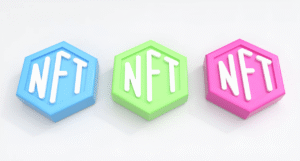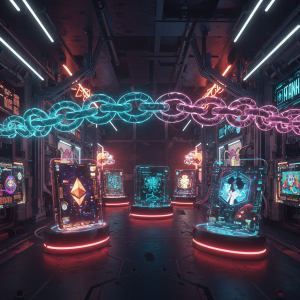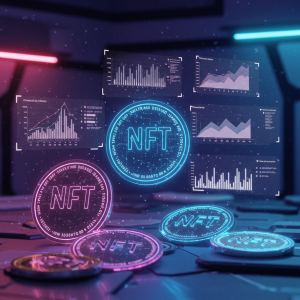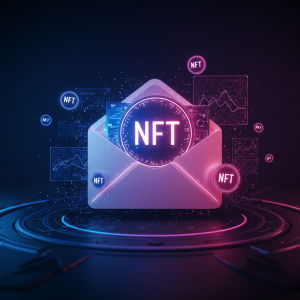NFT Cross-promotion Strategies with Traditional Brands

The interface between non-fungible tokens and traditional consumer brands has evolved substantially since the initial experimental collaborations of 2021. What began as tentative forays by risk-taking companies has matured into sophisticated partnership strategies that leverage the distinctive strengths of both worlds. These collaborations, when executed thoughtfully, create unprecedented value propositions that neither party could achieve independently.
Traditional brands bring established customer bases, production infrastructure, and mainstream credibility to these partnerships. Meanwhile, NFT projects contribute technological innovation, dedicated communities, and direct-to-consumer engagement models that many traditional companies struggle to develop organically. This complementary relationship enables cross-promotional initiatives that transcend simple marketing campaigns.
Successful collaborations establish authentic connections between physical products and digital ownership, creating experiences that feel coherent rather than forced. The most effective partnerships acknowledge the fundamental value that each side contributes rather than treating either as merely a promotional vehicle for the other.
Authentication and Provenance Applications
Perhaps the most natural convergence between NFTs and traditional brands occurs in authentication systems for high-value physical products. Luxury fashion houses, premium spirits producers, and collectible manufacturers have implemented NFT-based verification systems that simultaneously combat counterfeiting and enhance owner experience.
These implementations typically pair physical items with digital tokens that contain verifiable ownership history, production details, and authenticity credentials. The physical-digital connection often utilizes embedded NFC chips, QR codes, or unique identifiers that link tangible products to their blockchain-verified counterparts.
Beyond mere authentication, these systems create ongoing relationships between brands and customers. Post-purchase interactions might include exclusive content releases, special event access, or community membership – transforming single transactions into continuous engagement opportunities.
The Swiss luxury watchmaker Hublot exemplified this approach with its limited edition timepieces that included companion NFTs. Each digital token contained the complete provenance record of its physical counterpart while unlocking members-only experiences through Hublot’s digital portal.
Limited Edition Physical Redemptions
Physical redemption programs represent another compelling cross-promotional strategy, allowing NFT holders to claim tangible products connected to their digital assets. These initiatives create multi-dimensional value by combining the scarcity and tradability of NFTs with the tactile satisfaction of physical merchandise.
Redemption programs range from simple merchandise fulfillment to elaborate experiences that bridge digital ownership and physical engagement. The most sophisticated examples implement “phygital” approaches where the physical item and digital asset maintain an ongoing relationship rather than the redemption concluding the engagement.
For brands, these programs offer opportunities to transform digital communities into physical customers while introducing existing consumers to blockchain-based ownership models. The cross-pollination between these audiences creates marketing efficiencies while establishing new engagement channels for both entities.
As we’ve discussed on our NFT market analysis page, effective redemption programs require careful logistics planning and clear communication about fulfillment timelines. Brands entering this space must establish robust systems for inventory management, global distribution, and customer support specific to NFT redemptions.
Co-created Collections and Shared Universe Building
Beyond tactical promotions, strategic partnerships between NFT projects and traditional brands have led to collaborative world-building initiatives where intellectual property from both entities combines to create something entirely new. These shared creative universes expand narrative possibilities while introducing each party’s audience to the other’s content ecosystem.
Successful co-created collections typically involve substantive creative input from both sides rather than simply applying brand assets to existing templates. This approach requires significant investment in relationship development, creative alignment, and contractual frameworks that equitably address intellectual property considerations.
The storytelling potential of these collaborations enables brands to explore narrative dimensions that might not fit within their established identity, while NFT projects gain access to recognized characters, settings, or themes that resonate with broader audiences. When executed authentically, these creative partnerships can transcend commercial objectives to create genuinely innovative artistic expressions.
Retail Integration and Physical Showcases
Physical retail environments provide compelling contexts for NFT cross-promotions, creating tangible touchpoints for digital assets. Forward-thinking brands have implemented in-store NFT showcases, redemption locations, and interactive displays that introduce traditional consumers to blockchain-based collectibles within familiar shopping environments.
These retail integrations range from dedicated gallery spaces within flagship stores to limited-time pop-up experiences coordinated with NFT drops. The physical presentation of digital collectibles helps overcome the accessibility barriers that sometimes prevent mainstream adoption while creating memorable brand moments that differentiate retail experiences.
For NFT creators, retail partnerships provide valuable exposure to consumers who might not otherwise encounter their work. The endorsement of established brands also confers legitimacy that can be difficult to achieve independently within the sometimes chaotic digital collectibles space.
Adidas demonstrated this approach effectively through its partnership with notable NFT creators, establishing dedicated spaces within select retail locations where customers could interact with digital collectibles while exploring related physical merchandise.
Loyalty Program Enhancement
Traditional loyalty programs have embraced NFT technology to create more engaging, transferable, and valuable reward systems. By tokenizing loyalty points, status levels, or exclusive access rights, brands transform static reward programs into dynamic ecosystems with secondary market potential.
These enhanced loyalty initiatives typically maintain the familiar accumulation mechanics of traditional programs while adding ownership dimensions that conventional systems cannot support. Members might receive limited edition NFTs for reaching milestone thresholds, completing specific activities, or participating in brand moments – creating collectible histories of their relationship with the company.
The transferability of tokenized loyalty benefits addresses a fundamental limitation of conventional programs where accumulated value remains locked to individual accounts. NFT-based systems allow members to trade or gift their rewards, creating additional utility while potentially introducing new customers to the brand ecosystem.
Implementation Considerations and Best Practices
Successful cross-promotional strategies require thoughtful implementation approaches that respect the values and expectations of both traditional consumers and NFT communities. Brands entering this space should consider several crucial factors before launching collaborative initiatives.
Authentication mechanisms require particular attention, as the connection between physical products and digital tokens forms the foundation of many cross-promotional strategies. Technical implementation should prioritize user experience while maintaining security, often necessitating specialized development expertise.
Community engagement approaches must balance the expectations of existing brand followers with the participatory culture of NFT spaces. Successful collaborations typically involve dedicated communication channels and transparent development processes that incorporate feedback from both constituencies.
Pricing strategies require careful calibration, particularly for limited edition physical redemptions or co-created collections. The value proposition must make sense within both traditional retail contexts and NFT marketplaces, which sometimes operate with different economic assumptions.
Legal frameworks for these partnerships need comprehensive structures addressing intellectual property rights, revenue sharing arrangements, and ongoing royalty distributions. These agreements often break new ground in licensing precedents, requiring specialized legal guidance.
Future Trajectories and Emerging Models
The evolution of cross-promotional strategies continues to accelerate as brands and NFT projects develop increasingly sophisticated collaboration models. Several emerging approaches suggest where this convergence might lead in coming years.
Dynamic product experiences represent a promising frontier, where physical items change in response to developments within their paired NFT ecosystems. These connected products maintain ongoing relationships with digital worlds rather than serving as static redemption items.
Tokenized co-ownership structures enable brands and their communities to share governance rights over collaborative projects, creating aligned incentives for long-term development. These approaches transform traditional licensing relationships into true partnerships with distributed decision-making mechanisms.
Cross-chain implementations are addressing the technical fragmentation that sometimes complicates brand partnerships, allowing collaborations to reach audiences across multiple blockchain ecosystems without requiring consumers to navigate complex technical transitions.
Conclusion
As traditional brands and NFT projects continue exploring collaborative possibilities, the most successful initiatives will transcend simple cross-promotional objectives to create genuine innovation at the intersection of physical and digital experiences. The partnerships that deliver lasting value will approach these collaborations as substantive creative endeavors rather than tactical marketing campaigns.
For brands considering entry into this space, the key differentiator remains authenticity – both in respecting the culture of NFT communities and in creating blockchain implementations that align with core brand values. When approached thoughtfully, these collaborations can establish new paradigms for consumer engagement that honor the heritage of traditional brands while embracing the transformative potential of blockchain-based ownership.








